Top Twelve Tips from a Terrific Year of Health & Wellness Conversations Between Reviewers and Authors
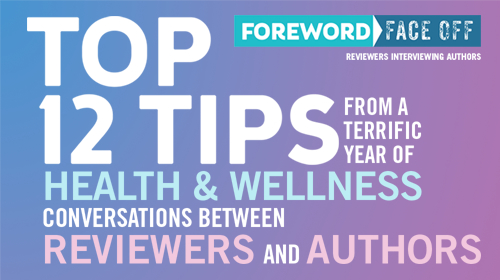
2019 marked a banner year of Foreword This Week interviews between reviewers and authors, including a handful of conversations about new health and wellness books. For this first installment of the new year, we searched the 2019 archives for the most beneficial advice from seven remarkable healthcare specialists. Not preachy or demanding of radical change, these authors truly embody the lost art of healing body, mind, and spirit.
Happy New Year!
Reviewer Melissa Wuske Interviews Marjolein Dubbers, Author of Hormone Power: Transform Your Diet, Transform Your Life
Much of the book focuses on helping women understand their bodies, before diving into more specific dietary suggestions. It’s a stark contrast to dietary advice that simply tells people what to do. Why is this foundational understanding so critical?
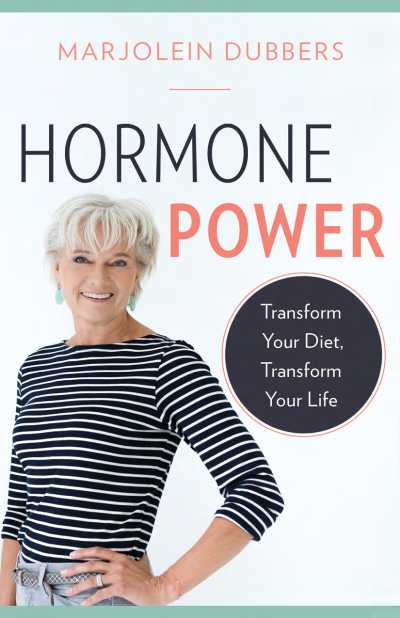
It’s old-fashioned to stick to simple lists of daily or weekly menus. Diets or eating patterns that are called suitable for everyone simply don’t exist. I want to teach women to really listen to their bodies again. Even healthy food such as avocado or eggs are not suitable for everyone. If you’re aware of how female hormones work and which signals or symptoms can be linked to certain hormones, then you possess important information to improve your health. For example, if you feel that your blood sugar level is not stable because you start to feel hungry again just two hours after breakfast, you can adjust your diet accordingly. Only understanding the signals your body gives you can you put together a menu that fits you.
“I should change, but I don’t want to.” This is many women’s response to the clear, practical wisdom you provide. What motivational tips do you have to help women get started and sustain their efforts?
I always say: We cannot motivate people, we can only inspire them. If some women are not ready to change, then they are simply not ready. I believe that women can become more powerful by eating the right foods and taking better care of themselves! In my opinion, women’s health is really undermined by, for example, processed foods, a lack of exercise, too much stress, and chemical substances that exist in our environments. I encourage women to change old patterns in their lives, step-by-step, and create new patterns. I hope that when women stand up for themselves and for their health and become visible, more women will notice and say: What she has, I want too.
You close the book by talking about the concept of a “landscape of longing”—I love that phrase. That concept—what an individual woman hopes of and dreams about—is central to your personal, positive approach. What happens if a woman follows your advice, which is largely the same for every woman, without tapping into that personal vision?
I think that every woman needs a ‘landscape of longing’ to inspire and motivate her to create new habits. It makes it so much easier. Eating healthy is a means to an end, not an end in and of itself. Even feeling healthy and vital is not the ultimate goal. No woman says on her deathbed: I had a great life because I’ve always been healthy and vital. We want to do something beautiful with this feeling of vitality. We want to show ourselves to the world, we want to speak up, and we want to make the world a better place. This vision of our own future: that’s the motivation we all need to make different choices—every single day.
Reviewer Tanisha Rule Interviews Gigi Berardi, Author of Food Wise: A Whole Systems Guide to Sustainable and Delicious Food Choices
Although you state outright that the complex topic of body weight is one you didn’t attempt to fully cover in the book, what you did include makes your beliefs on body image clear. Why is the myth of the ideal body important to debunk and separate from the idea of living a Food Wise eating life?
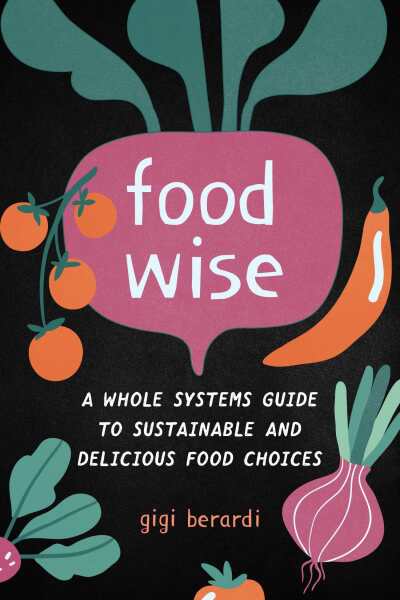
The drive for, and ideal image of, perfection is the crux of the problem. We have to try to let go of the body images, as well. We are our worst and most frequent critic. Images of thin, of sinewy gods and goddesses, of sylph-like forms, those aren’t for real people. I write about this at length in my book Finding Balance: Fitness, Training, and Health for a Lifetime in Dance (Routledge, 2005).
And here’s the thing, striving for thin by severely reducing calorie intake doesn’t even make physiological sense because the body often adapts by lowering its metabolic rate, and need, for calories. Now, there are exceptions, and I can think of one food plan in particular that beautifully addresses weight management, but it involves a lot of external support and tools.
Really, we have to develop positive body images and role images (mother, cook, friend)—away from obsessive body image and/or work schedules. I get that perfectionism can be a personality trait and many cooks, for example, have pretty high standards, which are necessary to create their exquisite art. But doing well in the kitchen is about avoiding excessive pressure and self-criticism. Let’s just put this out there: we’re not going to be perfect, flawless cooks eating the perfect diet to have the perfect body size. Rather, we need to settle for “good enough.” For cooking, I’m all about, “This is what dinner looks like when I’m at work most of the day and then taking care of my three kids at night. And I forgot to pick up the milk.” Cooking is about experience—and that’s a critical part of, the “E” in, FoodWISE.
Reviewer Kristine Morris Speaks with Anna Borges, Author of The More or Less Definitive Guide to Self Care
Another standout for me was that, no matter what’s trending at the time, your book makes it clear that there is no one-size-fits-all or “right” way to engage in self-care, and points out ways that people can determine what might be best for them. What types of self-care have you chosen for yourself, and how did you decide that they were right for you at this time? How will you know when it’s right for you to change them?
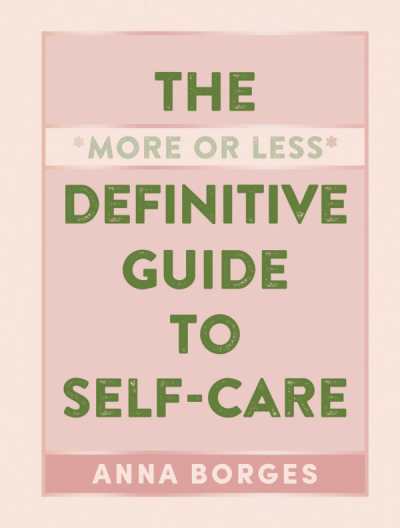
Figuring out the right self-care for me involves so much trial and error, and a lot of honest self- reflection. There are things that I know bring me comfort in the moment (like, say, binge-watching Netflix and eating a lot of comfort food) and I’ve had to be like, “Okay, yes, this brings me instant gratification, but I always feel tired and sluggish and guilty afterwards. Is this really self-care?” Sometimes the answer is “no,” and sometimes the answer is “yes, but in smaller doses,” and I have to recalibrate accordingly.
On the other side of the coin, there are a lot of things I hate doing but always feel better having done them, and I have to remind myself of that, too. Like, I will never be someone who likes working out, but I know that if I go too long without getting outside or exercising, I wind up feeling like crap.
So basically, my self-care involves a lot of experimenting and honoring what my brain and body tell me, even when I don’t love the answer.
You’ve also given attention to mental health issues that impact a person’s ability to engage in self-care, and your book provides resources for finding therapists and 24/7 crisis help. Do you find that therapists, counselors, and/or medical doctors are good advocates for self-care? Or have you found that pharmaceutical solutions are often offered when lifestyle changes might be not only more effective, but free of side-effects?
I don’t think those two options are mutually exclusive at all! Therapists, counselors, and medical doctors can be spectacular advocates for self-care while still offering medication as part of a treatment plan. For people who don’t want medication, I understand the worry that a mental health professional might “push” it on you. But just like any profession, there are good mental health professionals and bad mental health professionals. And in my experience, there are plenty of good mental health professionals out there who will encourage both self-care and medical intervention when it makes sense for their clients.
I would even argue that I’ve heard more about the opposite problem—not mental health professionals offering “pharmaceutical solutions” in the place of lifestyle changes, but some belittling people’s pain and suffering by telling them that all they need to do is drink more water and go for a run.
There is still a ton of stigma around taking medication for mental health issues and it’s impacted me a lot. Because of a societal attitude that medication is bad and that people should be able to manage mental illnesses with lifestyle changes, it took me a really long time to allow myself to even consider taking medication for my depression, anxiety, and suicidal ideation. I internalized that taking the medication I needed was the “weaker” option. Luckily, I got through that and am not exaggerating when I say I owe my life to my antidepressants. Yes, some of the side effects suck, as with any medication, but the side effect of not taking them was wanting to die. I’m certainly glad there was a mental health professional who heard my worries and worked with me to find the right solution.
Medication for mental health issues certainly isn’t for everyone and many choose to manage their mental illnesses with therapy and lifestyle changes alone. But people who choose medication as part of their treatment plan shouldn’t be made to feel that they chose a lesser option, and good mental health professionals who do their due diligence by going over the myriad treatment options shouldn’t be treated like they’re in the pocket of Big Pharma or something.
Reviewer Rachel Jagareski Hams It Up with Benjamin Aldes Wurgaft, Author of Meat Planet: Artificial Flesh and the Future of Food
As a self-described ambivalent omnivore, did your own eating habits change over the five years during which you researched and wrote your book?
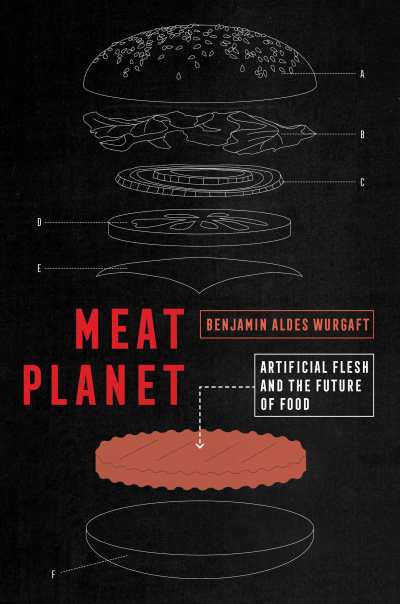
Researching and writing Meat Planet forced me to confront one of my moral failings: I think that killing and eating animals at an industrial scale has no good defense, and yet I do consume meat, along with other animal products, and I’m sure that much of it has industrial rather than “pastoral” origins. I aspire to eat animals whose lives and deaths I can affirm, and to make meat more of a condiment, less of a pillar of my meals. But I never developed the desire to become vegetarian or vegan. To give up animal products entirely feels too much like an expression of moral certainty, and that’s something I mistrust deeply.
Reviewer Kristine Morris Interviews Carla Marie Manly, Author of Aging Joyfully: A Woman’s Guide to Optimal Health, Relationships, and Fulfillment for Her 50s and Beyond
These days, isolation is becoming epidemic, and loneliness is taking its toll on the mental, physical, and spiritual life of people of all ages. How does isolation impact an aging woman’s self-perception, and how does one go about finding, or creating, communities of women that will love and support each other so that no one has to face the challenges of aging alone?
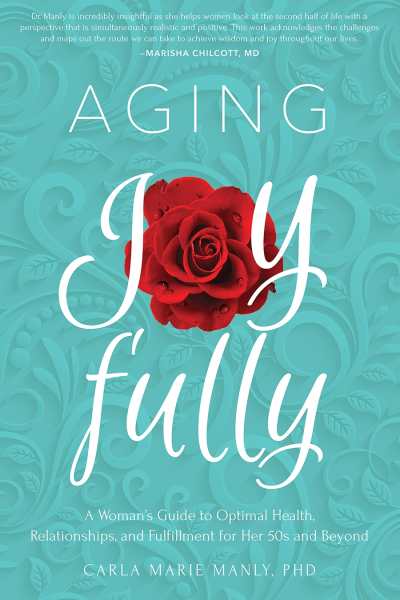
Isolation is incredibly damaging, both psychologically and physically. In fact, research shows that we heal from health challenges more quickly when we are connected to and supported by loved ones. An aging woman’s self-perception is certainly negatively affected when she does not feel connected to others; we are gregarious creatures by nature, and it’s vital to our sense of self to feel that we are loved and valued by others. As women, we thrive when we feel connected to a close circle of friends and family and to a greater social network. Many women confide to me that they feel alone and friendless, particularly after they retire and relationships from work fall by the wayside. The “cure” to isolation is both simple and difficult: one must persevere in creating new friendships, whether through joining social groups, attending religious or spiritual events, volunteering, or taking classes. And many women find great success in creating reading clubs, potluck events, or hosting game nights. It may take time to break into existing groups or form new ones, but warm-hearted perseverance eventually pays off.
Reviewer Matt Sutherland Interviews Thomas Cowan, Author of Cancer and the New Biology of Water: Why the War on Cancer Has Failed and What That Means for More Effective Prevention and Treatment
In the book, you clarify the misconception that water has only three states—liquid, ice, and steam—when, in fact, there’s a fourth: gel. You more commonly refer to this fourth state as “structured” water, and that this form of water/gel is what’s inside our cells. Strikingly, you credit this substance as being a carrier of the body’s life force, and the single most important factor for our well being. In your words, “Health is the state of perfect intracellular gels. Disease is when this gel state deteriorates.” Please tell us how you arrived at this conclusion?
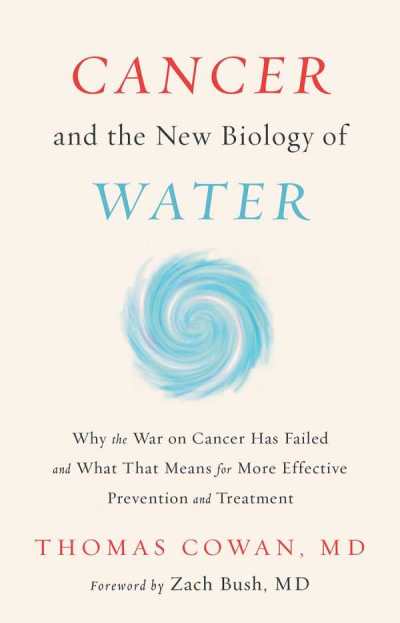
I arrived at this conclusion mostly by looking at physiology and what the most important and successful cancer programs are trying to accomplish. Our most important biological functions are to establish voltage or a charge in our cells, which is accomplished by the intracellular gel. This allows the cells to assume their proper spatial orientation which is key to function and lost in cancer. The intracellular gel also controls the expression of our DNA, another fundamental biological function. We are far too focused on the gene and not how it gets expressed. The expression is a result of its being acted on by the gel.
And, as I said, really all of the successful cancer programs of the last 100 years were working with the gels whether they knew it or not.
What causes poor intracellular gel and what we can do to maintain or improve the health of our intracellular gel?
Intracellular gels are formed from two directions: The first is the quality of the water itself. The second is the forces that act on the water. Gerald H. Pollack proves this with experiments in which he suspends a horizontal hydrophilic tube in water. If you put this beaker of water in a lead box the water doesn’t flow through the tube. The flow is a direct consequence of the ability of the water to form gels. If you have deuterium rich water, you get no flow; if you have water with toxins in it you get less flow. If you shine the sun on the water, the flow increases; if you put the beaker of water directly on the earth, it increases flow; if you put your hands or your dog next to the water, this increases flow. If you shine red incandescent light on the water, the flow increases. This can only be because of increased energy available to form gels.
On the other hand, if you put your cell phone, or any other wireless device next to the water, the flow lessens. Any non-native EMF (Electromagnetic Field) makes the water more chaotic, deteriorates the gels, and causes widespread disease. It’s due to a direct effect on the ability of EMFs to inhibit the ability of water to form healthy gels.
Reviewer Jessie Horness Interviews Gesshin Claire Greenwood, Author of Just Enough: Vegan Recipes and Stories from Japan’s Buddhist Temples
What do you think it looks like to be living a mindful life in these tumultuous times?
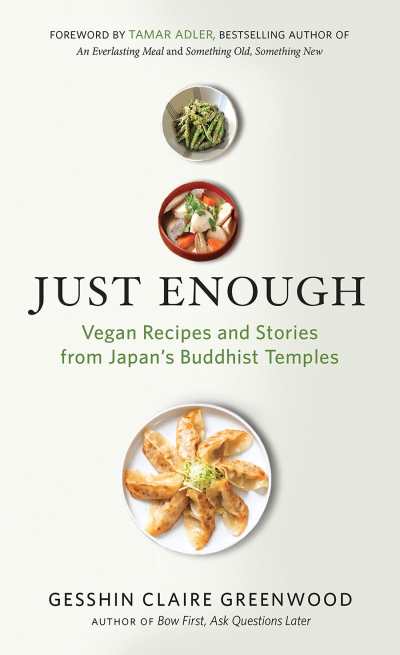
Ok, mindfulness. Mindfulness just means paying attention on purpose. It’s not so hard. But I think we need more than mindfulness these days. We also need to unplug, to reconnect with nature, to cultivate joy in our daily lives. Recently I’ve been experimenting with DIY wellness weekends; I’ll turn off my phone Friday through Sunday, and spend the weekend doing yoga, meditating, spending time in nature, cooking with my family, and doing art. I have to be very intentional and very firm with myself to set a boundary within which I won’t work or be on the internet or allow my critical mind to dictate how I behave.
I want to eat everything in your cookbook. Any DIY tips or substitution secrets for those of us living in areas where ingredients are less available?
Regarding the recipes, definitely buy powdered dashi. That will make all the difference in the beginning. I write about this in the book, but people are really averse to buying anything in powdered form. I guess it’s because they want things to be “natural.” But when you have a headache you’re probably gonna reach for Tylenol instead of willow bark, you know? I think it’s the same with cooking. If you wanna cure your headache by harvesting willow bark and boiling it down to extract the salicylate acid, then fine. Do you?! But you can also buy Tylenol. Same with dashi—it’s nice to sometimes make it from scratch, but it’s much faster and efficient to buy powdered dashi. In your case, I would just start by learning how to make rice and miso soup well. That’s a meal in itself. Once you get the basics down—how to make dashi, flavor profiles—expand to harder things.
Matt Sutherland
